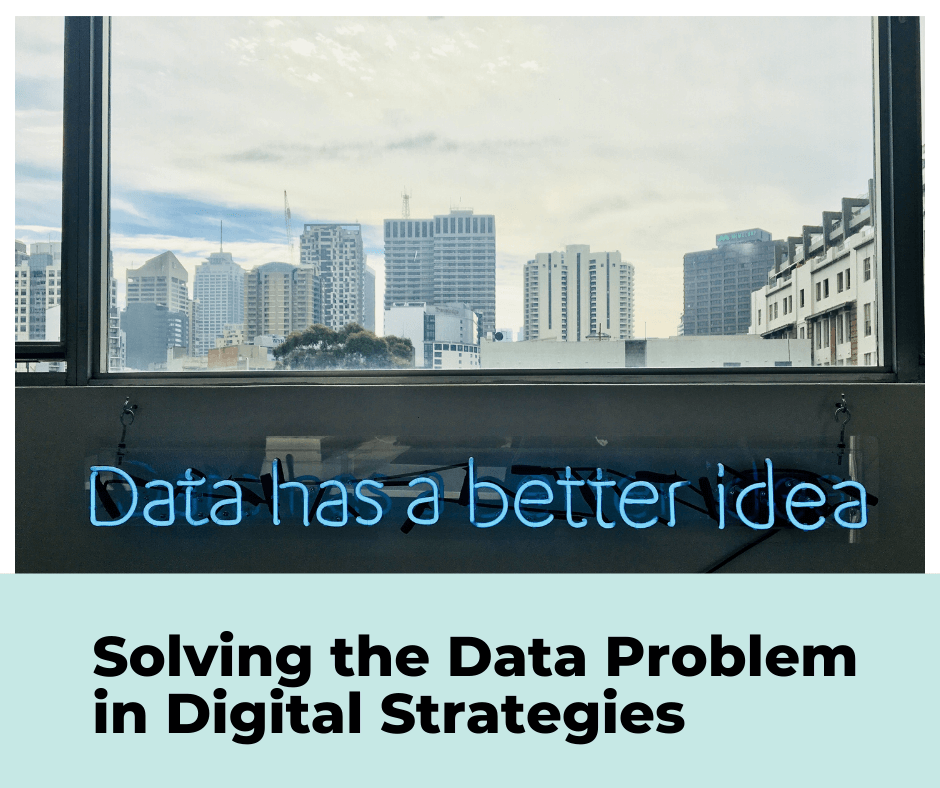SOLVING THE DATA PROBLEM IN DIGITAL STRATEGIES
Digital marketers are the most powerful they’ve ever been. Countless tools abound for measuring results on each advertising channel, from social media to mobile ads. The level of granularity in targeting is unprecedented–you can now advertise based on behaviours previously hidden to marketers, like purchasing history, and geolocation.
However, not all data is useful. At least, not all the time. There are over 5,000 measurement tools in the marketing space, which shows you how ridiculously noisy analysis can be. Our brains can only reliably hold seven items in short term memory at any given moment. Any more, and recall becomes unreliable. So why do we leave our marketers to flail through spreadsheets and data dumps from an average of 12 different tools?
Data has evolved into a powerful weapon for user acquisition and engagement, but only for businesses who know how to wield it. Here are some tips for marketers for staying on top of their analytics.

Know what You're Measuring Before You Start Campaigns
Three-fourths of marketers are unable to connect marketing efforts to the business’ bottomline. This can be a barrier to proving your advertising and engagement budget to upper management, because we all know that winning over the boardroom is a numbers game.
Fortunately, there’s a metric for evaluating even early stage marketing efforts. It all comes down to how it traces back to profitability. Marketing consultant and author Heidi Cohen recommends choosing metrics with the end in mind. “The key to effective tracking is to start before you develop your campaign. Specifically, define its objective, target audience, and user context since together these variables determine your metrics,” says Cohen.
Marketing campaigns often boil down to two common goals: acquisition and engagement. Yet not all digital marketing channels are created equal. A typical marketer’s funnel will made of different points that move consumers closer to a sale. How you measure results from each point will vary based on the action you want consumers to take.
If you don’t know where to start, we’ve compiled a short and sweet roadmap of metrics efficient marketers often track for each channel and purpose:
- Social media: If you’re aiming for acquiring users on social media, the common KPIs to look out for are reach, followers, and traffic. If your goal is to engage, look at the activity for each post: the number of likes, comments, shares, reactions, and brand mentions.
- Mobile marketing: Brand awareness campaigns on mobile are usually measured by CPM, or how much you’re paying per thousand impressions. If you want to measure mobile’s effectivity as the final step of the funnel, it may be better to use CPA, or cost-per-action, so you know if your mobile campaign can seal the deal.
- In-app marketing: In-app marketing is one of the hottest platforms for advertisers, even outperforming TV and desktop ads. Ads often appear on mobile games, and therefore operate under different conditions than your regular mobile interstitials. If you’re running rewarded ads on mobile apps, opt-ins and video completions are a good way to measure user engagement.
- Influencer marketing: Measuring the effect of influencers can be difficult. Consumers may not immediately buy anything from a brand after watching an influencer video, but may remember them because of the video later down the funnel. Keep track of users who convert through the sponsored video by providing the influencer with trackable, unique hyperlinks to promote on their description, much like those found in popular YouTuber JianHao Tan’s product reviews.
Bring Together All Your Disparate Databases
Analysis paralysis is real. Marketers can break out of it by removing the most problematic part of the equation: data gathering. By having all your data pulled up on a clear, straightforward dashboard, it’s going to be easier to see where you need to go next. There are several multi-platform attribution tools marketers can work with, like Optimove and Segment.
Work with Partner
In a multichannel marketing world, attributing a conversion accurately to any point in the funnel can be challenging. Most marketers still struggle to match and quantify the effect of certain digital channels to conversions.
You can hire a digital marketing agency that takes care of all your attribution and analysis needs, so you can dedicate your efforts to execution, and growing your business. By hiring a digital marketing agency to handle your data channels and shoulder the heavy task of crunching the numbers, businesses can focus on truly connecting with their customers on a deeper, more personal level. Marketers will also be given more resources to put together great creatives, which most report as the central task in all their marketing campaigns.
Make Sure Your Data Sources Are Reliable
Some 31% of marketers don’t trust data coming from third-party ad partners and providers. The hesitation is well-warranted: recent research has uncovered that 15% of traffic from ad networks is fraudulent, meaning marketers are paying for clicks and views that don’t actually exist, costing them billions in advertising budget. There are also unsavory operators who promise the moon and sun, but actually outsize results. Look for ad partners who can be transparent about their ad inventories, and can provide clear attribution when you ask them to.
The challenge for businesses now is not how to get accurate information, but which data set to listen to. Not where to get the figures, but how to figure out which metrics in the endless data stream is relevant to the successful execution of their digital marketing strategy. To see the forest for the trees, marketers should learn how to recognize the data that matters.
As a digital marketing agency, NEO360 specializes in end-to-end solutions for businesses. We’re well-versed in every step of the marketing funnel, from the first moment the user sees your ad, to the moment they click the purchase button. Get in touch with our marketing experts today to discover how to optimize campaigns on every channel.




